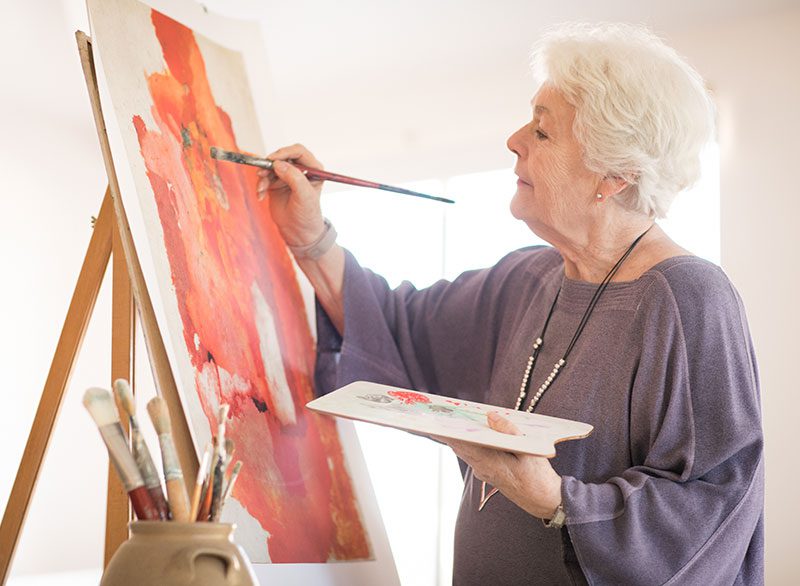
Mindfulness works well to manage stress, anxiety and depression. It also helps improve sleep quality and attention. Your chances of living longer go up by 50% with strong social connections. This makes mindfulness even more valuable when you combine it with supportive community living. This piece shows you how to adopt mindfulness to boost your daily life, whatever stage you’re at in your wellness experience. You’ll find practical techniques and habits that bring more peace and balance to your everyday routine.
The Power of the Present Moment
Living in the present moment is the lifeblood of mental well-being. Research shows that focusing on the present moment helps build stress resilience and leads to better coping strategies. Mindfulness means staying aware of what’s happening right now without getting caught up in the past or future. This practice helps you feel better and handle pain more effectively during stressful times. Studies also show that people who stay present experience less anxiety, depression and stress.
Two key mechanisms make mindfulness work. The practice keeps you grounded in the present, which stops your mind from wandering to regrets or worries. You also learn to watch your thoughts without judgment, just like leaves floating down a stream. These skills help you stay mentally clear and emotionally balanced.
Your mind works like a muscle that needs regular exercise. Mindfulness practice strengthens your ability to stay clear-headed exactly at the time you need it most. This improved mental focus carries over into your daily life. You start to notice when your thoughts drift and can bring your attention back to what matters.
Starting Your Mindfulness Journey
You don’t need special equipment or extensive training to start practicing mindfulness. Take 5-10 minutes and find a quiet space. This practice can fit into your morning routine, lunch breaks or any peaceful moment you find during the day.
These basic steps will get you started:
- Find a comfortable position, like sitting, standing or lying down
- Close your eyes or soften your gaze
- Focus on your natural breathing pattern
- Notice when your mind wanders and gently return focus to your breath
Regular practice makes mindfulness more available to everyone. Pick a time that naturally fits your daily schedule and stick to it. You’ll notice thoughts crossing your mind as you progress – this is natural. The key is not to fight these thoughts but to acknowledge them and bring your focus back to breathing.
Simple activities can help residents with mindfulness. We focused on one sense at a time – the warmth of water while washing hands or the smell of morning coffee. These everyday moments are a great way to get mindfulness practice. Your mind will wander – it’s just how our brains work. Each time you notice and redirect your attention, you deepen your commitment to mindfulness.

Building Daily Mindfulness Habits
Mindfulness becomes a natural part of your daily life when you turn occasional practices into habits. We started by weaving mindfulness into activities you already do each day. Look for simple moments in your day that can work as mindfulness anchors. Here are some examples:
- Morning coffee or tea ritual
- Daily walks or movement
- Meal times
- Evening wind-down routine
- Regular household tasks
Mindful eating is a great way to get started. Take time to notice each bite’s texture and flavor instead of rushing through meals. Your brain will adapt to this heightened awareness, even if it feels strange at first.
You can build your mindfulness muscle beyond formal meditation by practicing active listening in conversations. This skill will boost both your personal relationships and overall well-being. Focus on one activity at a time and cut back on multitasking – it makes a real difference.
For seniors, connecting mindfulness to daily routines works best. Try staying present while brushing your teeth or folding laundry. When you choose activities you keep doing every day, mindfulness becomes natural rather than another item on your to-do list.
Note that these habits need time to develop. Keep your expectations realistic and celebrate the small wins along the way. With steady practice, mindfulness shifts from a conscious effort to an automatic response that enriches your daily life.
A Powerful Tool
Mindfulness is a simple yet powerful way to boost your well-being, whatever your current circumstances. Your experience with mental clarity and emotional balance begins with small, manageable steps that naturally become lasting habits.
The practice becomes easier as you build consistency in your daily routines. You can find peace amid life’s challenges through mindful breathing, focused attention during meals or present-moment awareness in daily tasks. Each moment of practice helps you grow stronger.
Life brings constant changes, and a mindfulness practice helps you stay grounded and resilient. Want to discover how we can help you on your mindfulness journey? Contact us at (408) 454-5600 to learn more about Sunny View, our assisted living in Cupertino, CA.
Mindfulness isn’t about perfection – it’s about progress. You build a stronger foundation for lasting peace and well-being each time you return to the present moment. Note that your mindfulness experience is unique to you and every small step forward adds to your overall wellness.







